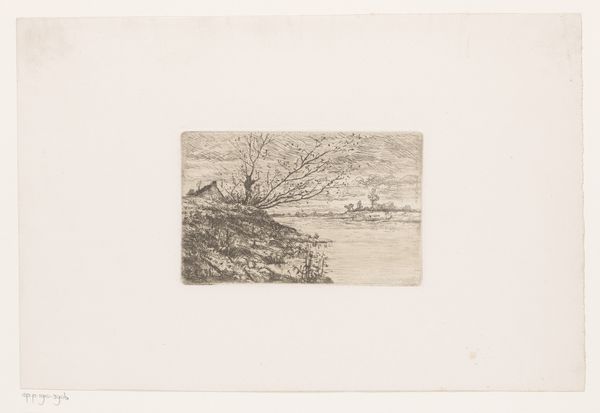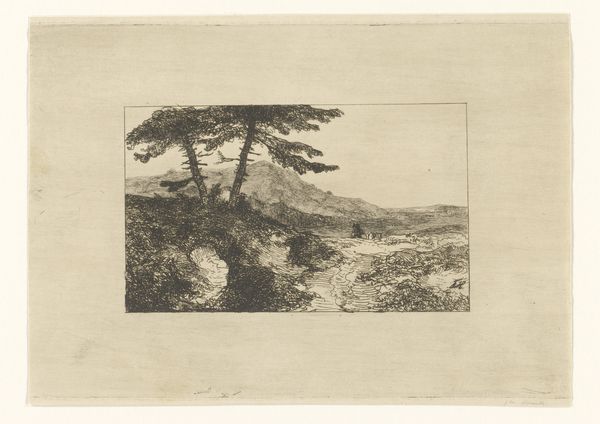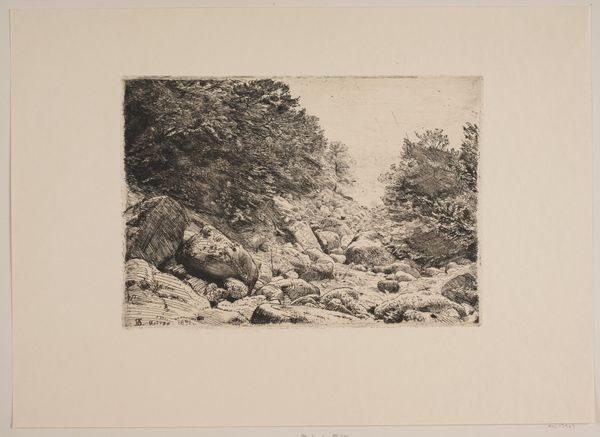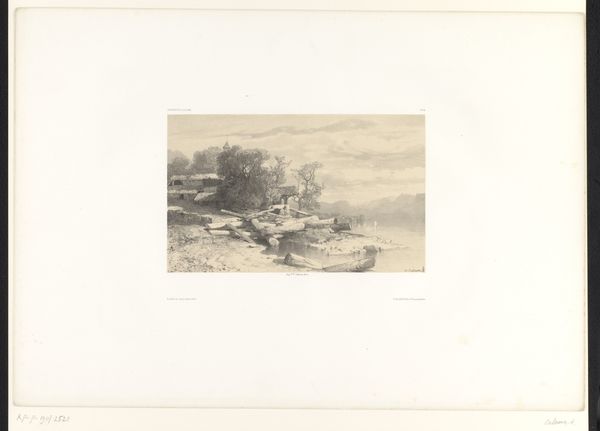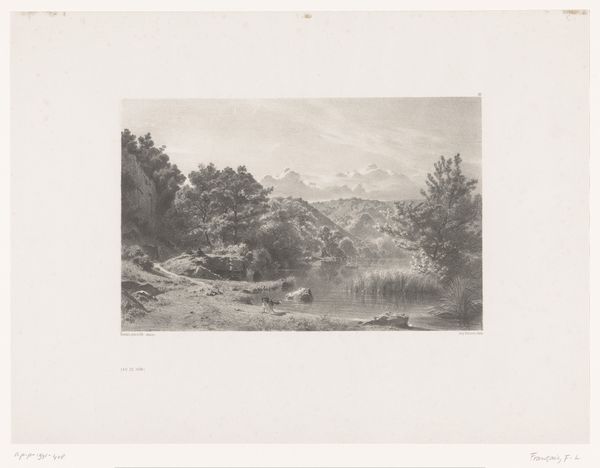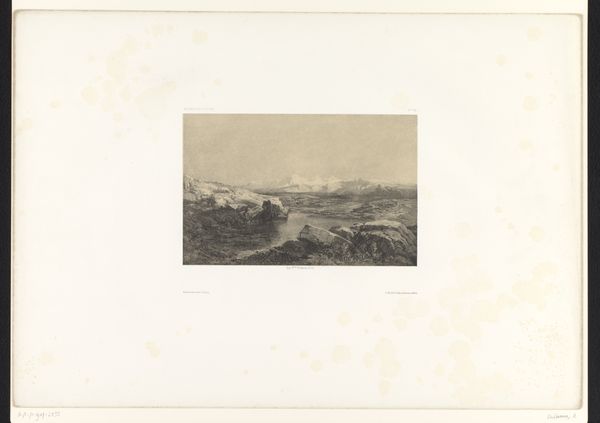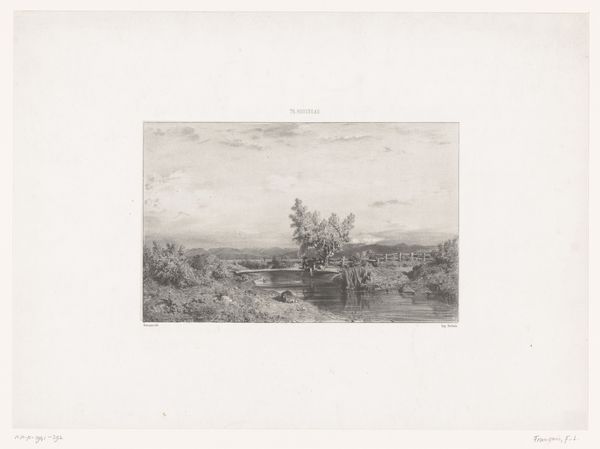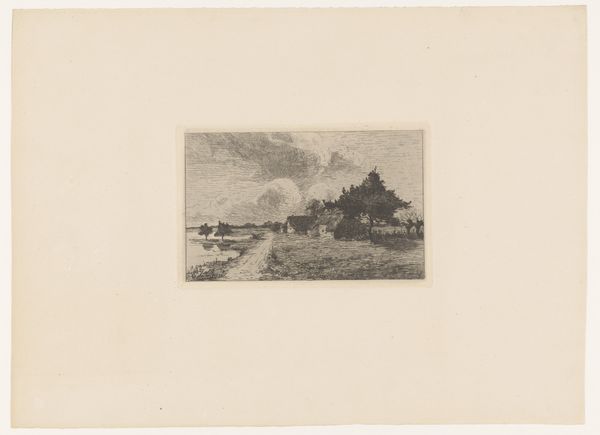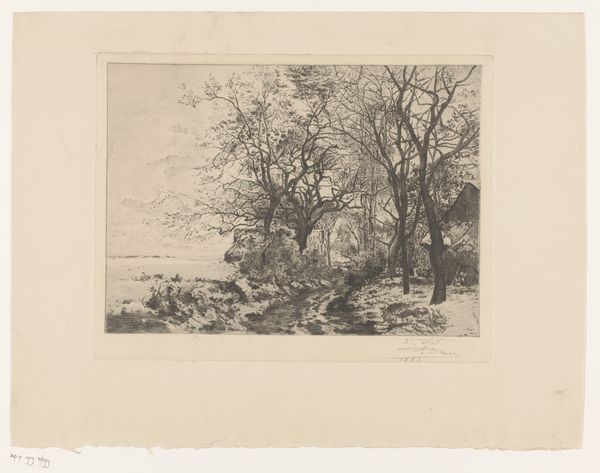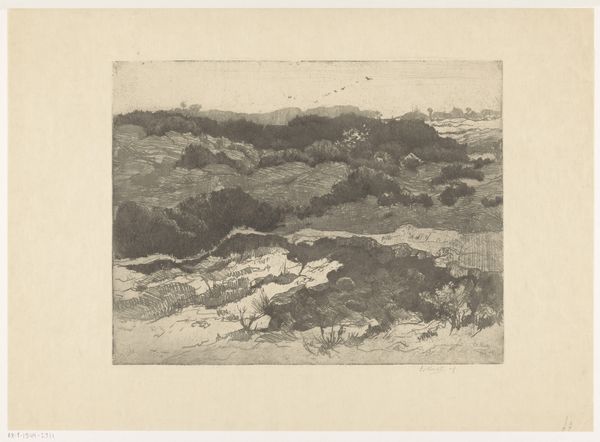
Dimensions: height 120 mm, width 179 mm
Copyright: Rijks Museum: Open Domain
Curator: This is "Three Amazons on Horseback in a Hilly Landscape," an 1857 etching by Edmond de Schampheleer. The work on paper features a landscape scene dominated by an expansive sky. Editor: The immediate feel is… slightly melancholic? The gray scale and looming clouds give it a somber weight. Yet, the three figures seem almost defiant as they ride on. Curator: It's interesting that you note the sense of defiance. Schampheleer produced this during a period of social and political upheaval in Belgium. How do you read that history playing into it? Editor: Well, the presence of these female figures in the landscape disrupts the common understanding of female representation in 19th-century art. We often see women positioned as passive, or allegorical figures. The etching, to me, evokes something else entirely. Curator: I can appreciate that interpretation. Viewing the piece in context helps me appreciate his Romantic influences too, that he might not have been trying to make that statement necessarily, but representing it at face value because he sees the Romantic figure existing as this adventurous and powerful thing. Editor: Exactly, and those “amazons,” might be symbols of female agency in a patriarchal society, who aren't just sitting pretty for portraits; they're out claiming space in the land, a space often coded as male. Curator: This print underscores the democratization of art that the etching as a medium can deliver. While landscapes in oil might adorn salon walls, an etching allowed these narratives to circulate much more widely. Editor: Precisely, and within those accessible images are embedded potentially subversive narratives. It's a small etching, and you might miss them! But look closely and consider these riders’ assertion of selfhood! Curator: It’s remarkable how a landscape, seemingly neutral, becomes a ground for such powerful discussions about representation, social change, and historical awareness. Editor: Indeed. It just confirms for me that art is never separate from its world, and, if we are critical of its past, then the present isn’t neutral either.
Comments
No comments
Be the first to comment and join the conversation on the ultimate creative platform.
